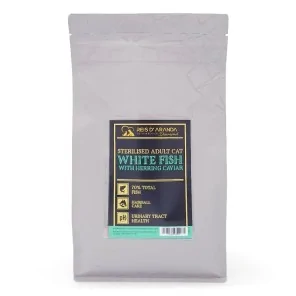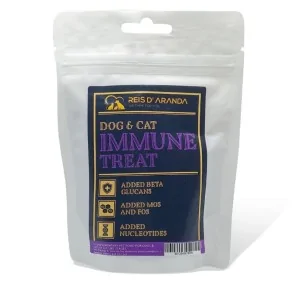The Tornjak originated from genetically homogeneous, almost extinct, indigenous shepherd dogs. These dogs have...
FELINE LEUKAEMIA
INTRODUCTION
Feline leukaemia is a widespread chronic disease in cats, which can lead to serious problems and damage to the animal's immune system.
WHAT IS FELINE LEUKAEMIA?
Feline leukaemia virus (also called ‘FeLV’) is a virus that can be found anywhere in the world. Any cat can be infected by the virus, but the risk of infection varies greatly depending on its age, habits, general health and the environment in which it lives (an animal living on the street is not the same as one living in a house).
FeLV can be transmitted by two main vectors: mutual grooming (including from mother to kittens), through the placenta, breast milk or through wounds caused by bites in fights. FeLV is present in body fluids mainly in saliva, urine and faeces. The FeLV virus does not survive outside the cat's body, so close contact between the infected and healthy animal is usually necessary for transmission.
Once the animal is infected, the virus multiplies in the bloodstream. During this initial phase, the cat can overcome the infection and kill the virus naturally, even without showing any symptoms, either because it has been previously vaccinated or because its immune system is very strong. However, in some cats the immune system cannot eradicate the virus (it is weakened), and these animals are persistently infected for the rest of their lives becoming carriers and affected; they may die within months or years of the initial infection and the virulence of the virus depends on the factors mentioned above.
SYMPTOMS OF FELINE LEUKAEMIA
The disease resulting from FeLV infection (feline leukaemia) can cause the appearance of different symptoms or alterations that vary from one cat to another, and may present only some of them or all of them. These include
- Fever
- Loss of appetite
- Lethargy
- Weight loss
- Deterioration and loss of coat
- Poor recovery from illness
- Inflammation of lymph nodes
- Anaemia
- Gastrointestinal disturbances
- Skin infections
- Upper respiratory tract infections
- Mouth infections (continuous, thick, stringy drooling)
- Cancer (as a result of the virus)
- Organ damage (bone marrow, kidneys, intestine or lymph nodes).
The stages of feline leukaemia are as follows:
- FIRST PHASE: This phase is also known as the ‘viraemia phase’, here the first symptoms such as lethargy or anorexia usually appear; the virus reproduces in the lymph nodes.
- SECOND PHASE: Called ‘asymptomatic phase’, at this point we may not find any signs of the disease because the cat's immune system has managed to get rid of it or because it is an asymptomatic sick cat, so the deterioration continues until reaching the third phase without us knowing about it.
- THIRD STAGE: Or ‘immunodeficiency phase’, in this phase there is an important drop in the number of CD4+/ CD8+ T lymphocytes, the cat's immune system collapses and what is known as ‘Acquired Immune Deficiency Syndrome’ (AIDS) develops.
In terms of diagnosis, the symptoms are usually so non-specific that it can sometimes be impossible to make an accurate diagnosis during the early stages of the disease. For example, if a cat shows stunted growth or deterioration in body mass, a vet should be consulted to dispel any suspicion of leukaemia.
CAN IT BE TREATED OR PREVENTED?
Vaccination can prevent persistent infection and consequently FeLV disease. The feline leukaemia virus vaccine may be included in the general vaccination, or may be offered as an adjunct to it, so it can be prevented and that is the importance of vaccination even if our cat has no contact with the outdoors.
If the cat is already infected, vaccination will not do anything about it, hence the importance of testing for the disease; as a general rule, breeders provide a veterinary certificate that the cat is free of the virus (it has not acquired it from the environment or the mother), but when we adopt a kitten or take it from the street, it is essential to do so, especially if we have more cats at home.
There is no drug that can eliminate the feline leukaemia virus or cure the diseases it causes; in fact, only supportive treatment can be given. However, such treatment can enable the cat to maintain an acceptable quality of life for many months or years.
CARE OF THE LEUKAEMIC CAT
The affected cat should be dewormed internally and internally on a regular basis and vaccination against the common diseases that these small animals can suffer from is essential, even if our cats do not leave the house or go out with other cats. This is extremely important as the FeLV virus depresses the immune system and any illness can be terrible for your cat: a tiny wound that becomes infected, a cold, a tick bite....
It is essential to stimulate the immune system not only with veterinary medicinal products, but also through food and, in this case, we must opt for quality feed and snacks that provide our cat with as many nutrients as possible, such as Reis d'Aranda's feed and snacks, which also have a specific snack for the immune system. It is also essential that we keep a weekly monitoring of their weight and that we avoid adopting more cats when we have a leukaemic kitten at home (to avoid contagion), this rule does not apply if the new kitten we are going to adopt has already been previously infected with the disease.
Leukaemia can present itself in several different ways and can have different specific veterinary treatments, but in any case it is recommended to follow the doctor's instructions carefully.
CONCLUSION
If you notice any symptoms or anomalies, contact your veterinarian so that he/she can carry out any necessary preliminary diagnosis on your cat.
Leave a comment
Log in to post comments
















